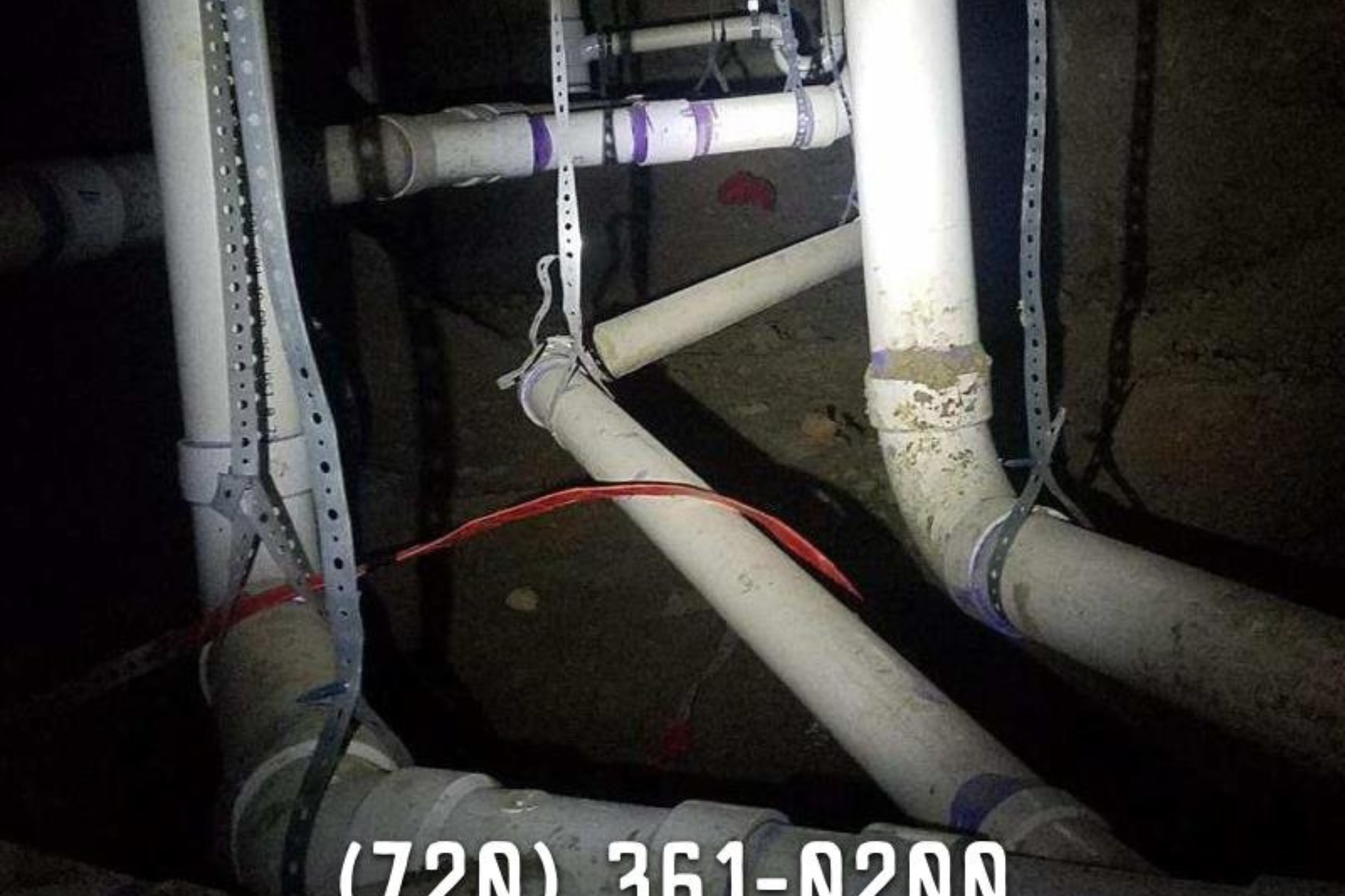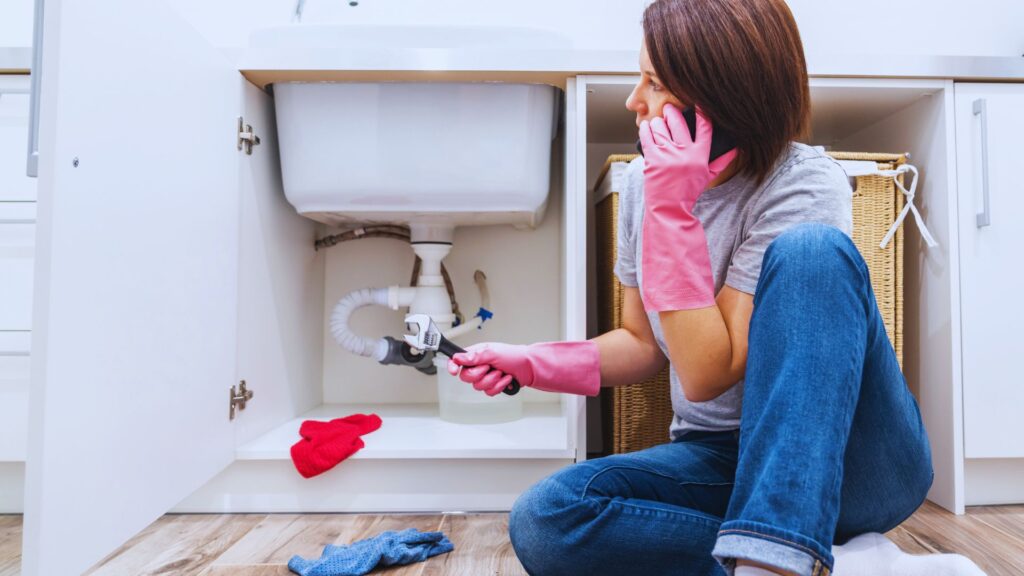Backflow is when water reverses direction in your plumbing system, risking contamination of your clean water with harmful bacteria and chemicals. It usually happens because of backpressure or back siphonage, which can arise from pump failures or water main breaks. This poses severe health hazards, especially to vulnerable individuals, and emphasizes the need for preventative measures like backflow prevention devices. Regular testing and maintenance by certified technicians are essential to guaranteeing that these systems function effectively, safeguarding your water supply. Understanding the intricacies of backflow helps you mitigate risks and ensure compliance with local safety regulations.
Key Takeaways
- Backflow is the unwanted reversal of water flow in a plumbing system, potentially contaminating the clean water supply.
- It poses health risks by introducing bacteria, chemicals, and heavy metals into the water supply.
- Backflow can occur due to backpressure or back siphonage, caused by issues like pump failure or water main breaks.
- Prevention measures, including backflow prevention devices, are essential to ensure water safety and system integrity.
- Regular backflow testing and maintenance are crucial for the early detection of faults and regulatory compliance.
Understanding Backflow Basics
Understanding backflow basics is vital for anyone involved with plumbing systems, whether you’re a homeowner, business owner, or property manager. Backflow refers to the unwanted reversal of water flow within a plumbing system, causing potentially contaminated water to flow back into the clean water supply. This reversal can significantly impact water safety and the integrity of your plumbing system. To protect against these risks, reliable backflow plumbing services are essential for proper prevention, testing, and maintenance.
You might wonder, what’s backflow? At its core, it’s a situation where water, typically under pressure, flows in the opposite direction from its intended course. This can introduce contaminants into the potable water supply, posing serious health risks and potentially violating local regulations.
The causes of backflow are primarily related to backpressure or back siphonage, which occurs when the pressure in the system changes unexpectedly.
Understanding the risks associated with backflow is essential. Contaminated water can lead to health hazards, such as exposure to harmful bacteria and chemicals. Furthermore, backflow can damage plumbing fixtures and systems, leading to costly repairs and legal liabilities.
Being proactive in managing backflow risks guarantees the safety and reliability of your water supply.
Causes of Backflow
When considering the causes of backflow, it’s crucial to examine the roles of backpressure and backsiphonage, as these are the primary culprits.
Backpressure occurs when the downstream pressure in a plumbing system exceeds the supply pressure, forcing water to reverse its flow. This can happen if there’s a pump failure, an increase in downstream pressure due to thermal expansion, or excessive pressure applied from a boiler. Each of these scenarios can lead to contaminated water being pushed back into the clean water supply, creating significant backflow issues in plumbing.
Backsiphonage, on the other hand, results from a reduction in the supply pressure, causing a vacuum effect that draws water back into the system. This typically occurs during events like a water main break, firefighting operations, or sudden heavy water usage. Such incidents can create conditions ripe for backflow, where non-potable water finds its way into potable water lines.
Both backpressure and back siphonage require attention to maintain water safety. Installing backflow prevention devices and scheduling regular system checks can mitigate these risks, ensuring your plumbing system operates without unwanted contamination. For reliable protection, professional backflow plumbing in Aurora CO is essential to keep your water supply safe and compliant.
Understanding these causes helps protect your water supply from potential hazards.
Health Risks of Backflow
After identifying the causes of backflow, it’s important to recognize the immediate health risks associated with this plumbing issue. When backflow occurs, contaminated water can flow back into your clean water supply, introducing harmful substances like bacteria, chemicals, and heavy metals. This contamination poses significant health risks, including gastrointestinal illnesses, skin infections, and, in severe cases, toxic exposure.
You might wonder why backflow is dangerous. The answer lies in the potential for life-threatening conditions, particularly for vulnerable populations like children, the elderly, and those with compromised immune systems.
To mitigate these risks, understanding and implementing backflow prevention measures is vital. Without proper backflow prevention, your water supply remains vulnerable to cross-contamination, leading to widespread health hazards.
Regular maintenance and testing of your plumbing system are essential to guarantee that backflow prevention devices function effectively. Ignoring these precautions can result in severe health consequences and potential legal liabilities if contamination spreads beyond your property.
Types of Backflow Prevention
Backflow prevention is vital in safeguarding your water supply, and several types of devices are designed to tackle this challenge. To guarantee your plumbing system remains free from contaminants, you can choose from pressure vacuum breakers, double check valves, and reduced pressure zone devices. Each device offers a unique level of protection tailored to specific backflow risks.
Pressure vacuum breakers are ideal for protecting against back siphonage and are commonly used in irrigation systems. Double-check valves offer a versatile solution that is suitable for moderate hazard conditions, while reduced pressure zone devices provide the highest level of protection for high-risk areas.
Installing these devices requires precise techniques to ensure they function correctly. It’s important to work with professionals who understand the intricacies of plumbing systems and local water safety regulations. For reliable Aurora CO backflow plumbing, regular maintenance, including pipe cleaning services, is essential to keep these devices in peak condition and prevent potential malfunctions.
When selecting a backflow prevention device, consider your specific needs and consult with a licensed plumber. They can assess your system, recommend the appropriate device, and guarantee proper installation. By investing in these measures, you’re not just complying with regulations but actively protecting your property from the risks of contaminated water.
Importance of Backflow Testing
Guaranteeing the safety and efficiency of your plumbing system hinges on regular backflow testing. Backflow testing is vital because it verifies that your backflow prevention devices are functioning correctly, safeguarding your water supply from contamination.
It’s not just about compliance; it’s about protecting your health and property. A malfunctioning device can lead to contaminated water entering your home or business, posing significant health risks.
During a backflow test, a certified technician will inspect your backflow prevention system, checking for any signs of wear or malfunction. They’ll measure the pressure levels to confirm your device is effectively preventing backflow. If any issues are found, they can address them promptly, preventing potential disasters.
Regular testing is essential, as even a minor fault can compromise your entire water supply. Annual testing is often required by local regulations, guaranteeing your system adheres to safety standards.
Steps to Prevent Backflow
To effectively prevent backflow and safeguard your water supply, start by understanding the essential components of a backflow prevention strategy.
First, install backflow prevention devices like pressure vacuum breakers, double check valves, or reduced pressure zone devices. These devices are key in blocking contaminated water from reversing into your clean supply. Make certain they’re installed by a licensed plumber to guarantee proper functionality and compliance with local codes.
Next, conduct regular inspections and maintenance. Annual backflow testing is essential to verify the performance of your prevention devices. This testing can identify faults before they lead to contamination. Engage a certified technician to carry out these tests and make any necessary adjustments or repairs.
Additionally, be vigilant about potential cross-connections in your plumbing system, where potable and non-potable water lines might inadvertently mix. If you find any, rectify them immediately to prevent contamination risks.
Finally, educate everyone in your household or business about the signs of backflow, such as strange tastes or odors in the water. Promptly addressing these indicators can prevent minor issues from escalating into severe problems. Relying on professional backflow plumbing Aurora ensures any concerns are handled quickly and effectively, keeping your water supply safe.
In Summary
Pipe It Up: You’ve seen why backflow is a serious concern. By understanding its basics, causes, and health risks, you’re better prepared to tackle it. Employ various prevention methods, like installing backflow preventers, and guarantee they’re regularly tested. Taking these practical steps not only protects your health but also secures your property from potential damage. Remember, preventing backflow isn’t just good practice—it’s essential for maintaining a reliable and safe plumbing system. Stay proactive and keep your water supply clean.




